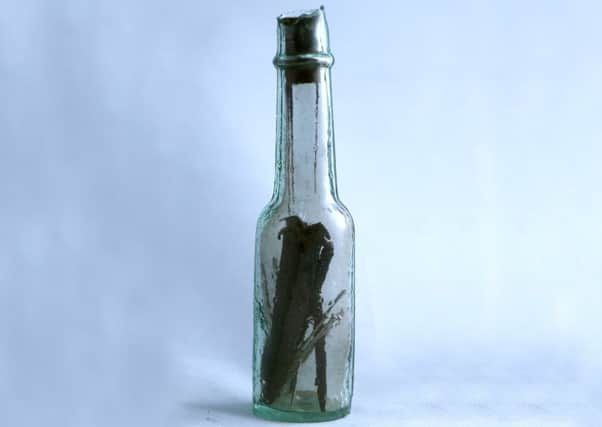Witch bottle was believed to protect against spells


William James Clarke (1868-1945) was born in Scarborough, the son of Richard Clarke a jeweller turned fizzy drink manufacturer. His younger brother Richard Edward Clarke (1878-1954) was a talented artist and taught at the Scarborough School of Art.
Following a career as a commercial naturalist selling natural history specimens, taxidermy, and hunting and fishing equipment, he became Keeper of the Rotunda Museum. Clarke was particularly interested in local superstition and folk beliefs but also collected a number of objects which purportedly protected the owner form witchcraft.
Advertisement
Hide AdAdvertisement
Hide AdThe subject of this week’s exhibit is a Witch Bottle. These were designed to be a protection against spells being cast upon individuals or buildings. Popular in the 17th and 18th Century one of the earliest references comes from a book dated 1681 and describes how a wise man helped rid an old lady of her troubles. She was told to place urine, iron pins and nails in a bottle, cork it and then bury it. After doing this her troubles eased, but later a woman approached her saying that the old woman had caused the death of her husband. As it turned out, the man in question was a witch, and the witch bottle had not only removed his spell, but bounced it back onto him and caused his untimely demise.
Whether or not our witch bottle ever contained urine, we do not know, but it does contain nine iron nails, nine needles and nine steel pins. The number nine is considered by some to be a particularly lucky number. It features heavily in world religions, particularly Norse mythology and Greek mythology and is also the length in months of human pregnancy.
Witch bottles are often found hidden in buildings, only coming to light during demolition. There is something of a tradition in Europe for hiding objects during the construction of buildings to act as protective charms. Some of the more commonly used objects are mummified cats, horse skulls and shoes. The most common of these protective objects is by far concealed shoes. They were often hidden in chimneys and walls, in fact one of the earliest known examples was found behind the choirstalls in Winchester Cathedral in 1308! It was believed that shoes could be used to capture witches and even the devil. Attracted by the smell (we’re not sure either!) a witch would enter the shoe and become trapped, unable to reverse out.
Another method of deterring witches was the use of a Hag Stone or Holey Stone. These are stones with naturally occurring holes in them and they were hung up in buildings to protect the occupants from evil influences. Sometimes, to increase their protective powers, they were tied onto a cord with old keys. As belief in witchcraft dwindled, these holed stones became more of a good luck charm; we have one in the collection that was used as such here in Scarborough as recently as 1935. On Dartmoor these stones were used for the same purpose, but it was also said that if you looked through the hole, you’d be able to see the pixies. Another name for these stones is Adderstone, and they were believed to aid recovery for those bitten by snakes.
Advertisement
Hide AdAdvertisement
Hide AdBe it shoes, hag stones or witch bottles, we hope we’ve given you some practical advice for supernatural home protection during these dark evenings… Happy Halloween!
The Witch Bottle is part of the Scarborough Collections, the name given to all the museum objects and artwork acquired by the borough over the years, and now in the care of Scarborough Museums Trust. For further information, please contact Collections Manager (maternity cover) Simon Hedges on [email protected] or 01723 384505.